Introduction
A slip and fall lawsuit is a legal action taken by someone who has been injured due to slipping or falling on someone else’s property. This type of lawsuit is filed when a person believes that the property owner or manager was negligent and failed to maintain a safe environment. For example, if a store has a wet floor and does not put up a warning sign, someone who slips and gets hurt might file a slip and fall lawsuit.
Understanding slip and fall lawsuits is important because it helps people know their rights if they are injured in such accidents. Knowing what constitutes negligence and how to prove it can be crucial for getting fair compensation for injuries. It also helps property owners understand their responsibilities to prevent accidents and avoid legal trouble. Awareness of these lawsuits can help both injured parties and property owners handle these situations better.
Common Causes Of Slip And Fall Accidents
Slip and fall accidents often happen due to several common issues. One frequent cause is wet or slippery floors. For instance, if a floor is recently mopped or has spilled liquids, it can become dangerous. Uneven surfaces or pavement are also a significant risk. Cracks or gaps in sidewalks or floors can cause people to trip and fall.
Another cause is poor lighting. If an area is not well-lit, it can be hard for people to see potential hazards, increasing the risk of accidents. Debris or obstacles in walkways, like litter or misplaced objects, can also lead to falls. Finally, broken stairs or handrails pose a serious risk. If stairs are damaged or handrails are loose, they can fail to support people properly, leading to slips and falls. Understanding these common causes helps in identifying hazards and taking steps to prevent accidents.
Legal Basis For A Slip And Fall Lawsuit
In a slip and fall lawsuit, there are key legal concepts involved. First is the duty of care. Property owners have a responsibility to keep their premises safe for visitors. This means they need to address hazards and maintain their property properly.
The second concept is breach of duty. This occurs when a property owner fails to meet their duty of care. For example, if a store knows about a wet floor but doesn’t place a warning sign, it might be seen as a breach of duty.
The third element is causation. To win a slip and fall lawsuit, the injured person must show that the property owner’s breach of duty directly caused the injury. This means proving that the unsafe condition led to the fall.
Finally, damages refer to the compensation sought for injuries and losses. This can include medical expenses, lost wages, and pain and suffering. Understanding these elements helps in building a strong case and ensuring fair compensation for injuries in a slip and fall lawsuit.
Proving Negligence In A Slip And Fall Case
To prove negligence in a slip and fall case, several types of evidence are crucial. First, evidence collection plays a key role. Photographs and videos of the accident scene can show the dangerous condition that caused the fall. Incident reports filed by the property owner or manager can provide details about the incident and the conditions at the time. Witness statements from people who saw the accident or were familiar with the hazardous conditions can also support the case.
Expert testimony may be needed to explain technical aspects of the case. Experts can provide opinions on the safety standards and whether the property owner met those standards.
Additionally, medical records are important. They document the injuries sustained and can link them directly to the slip and fall incident. These records help show the extent of damages and how the injuries impact the person’s life. Collecting and presenting this evidence effectively is essential for proving negligence and securing a fair outcome in a slip and fall case.
Steps To Take After A Slip And Fall Accident
After a slip and fall accident, taking the right steps is crucial for protecting your health and legal rights. First, seek medical attention immediately. Even if injuries seem minor, a medical evaluation can ensure that you receive proper care and document your injuries.
Next, report the incident to the property owner or manager. This creates an official record of the accident and helps establish that the property owner was notified of the hazardous condition.
It’s also important to document the scene of the accident. Take photographs and videos of the area where you fell, including any hazards that contributed to the accident. Gather information from any witnesses and keep a record of their contact details.
Finally, consult with a personal injury attorney. An experienced lawyer can provide guidance on how to proceed with your case, help gather evidence, and advocate for your rights. These steps are essential for ensuring that you receive appropriate medical care and legal support after a slip and fall accident.
Common Defenses In Slip And Fall Lawsuits
In a slip and fall lawsuit, property owners may use several common defenses to challenge the claim. One defense is contributory negligence. This means that if the injured person was partly at fault for the accident, such as not paying attention or ignoring warning signs, it could reduce or eliminate the property owner’s liability.
Another defense is assumption of risk. This argument claims that the injured person knew about the hazard and voluntarily took the risk of injury. For instance, if someone chose to walk in a clearly unsafe area, the property owner might argue that the person assumed the risk of falling.
A third defense is lack of notice. Property owners might argue that they were unaware of the hazardous condition and therefore had no opportunity to fix it. If they can prove they didn’t know about the danger and had no reasonable way of knowing, it can weaken the claim against them.
Understanding these defenses helps in preparing a stronger case and addressing the arguments that may be raised by the property owner in a slip and fall lawsuit.
The Legal Process For A Slip And Fall Lawsuit
The legal process for a slip and fall lawsuit involves several key steps. First, filing a claim is the initial action where the injured person formally starts the legal process by submitting a complaint to the court. This document outlines the details of the accident and the basis for the lawsuit.
Next is the investigation and discovery phase. During this time, both parties gather evidence and information to support their case. This includes collecting documents, taking depositions, and reviewing evidence related to the accident. The goal is to understand the facts and build a solid case.
Following discovery, settlement negotiations may occur. Both parties might discuss a potential settlement to resolve the case without going to trial. This involves negotiating the amount of compensation and terms of the settlement.
If a settlement cannot be reached, the case proceeds to trial and verdict. In court, both sides present their evidence and arguments. A judge or jury then makes a decision on the case. The verdict will determine whether the property owner is liable and, if so, what damages are awarded. Understanding these steps helps navigate the legal process effectively in a slip and fall lawsuit.
Compensation And Damages In Slip And Fall Cases
In a slip and fall case, compensation and damages aim to address the impact of the injury on the victim’s life. One major type of compensation is for medical expenses. This covers costs related to hospital visits, surgeries, medications, and any ongoing medical care needed due to the fall.
Lost wages are another form of compensation. If the injury prevents the person from working, they can claim damages for the income they would have earned during their recovery period.
Pain and suffering is a type of compensation for the physical pain and emotional distress caused by the injury. This considers how the injury affects the person’s overall quality of life and daily activities.
In some cases, punitive damages may also be awarded. These are intended to punish the property owner for particularly egregious conduct and to deter similar behavior in the future. While not always granted, punitive damages are reserved for cases where the property owner’s actions were especially negligent or reckless. Understanding these types of compensation helps in seeking a fair settlement or verdict in a slip and fall case.
Choosing The Right Attorney For Your Slip And Fall Case
Choosing the right attorney for your slip and fall case is crucial for a successful outcome. First, consider the experience and specialization of the attorney. Look for someone who has handled slip and fall cases specifically and understands the nuances of these types of lawsuits. Their experience can greatly impact the strength of your case.
Next, review the attorney’s track record of success. An attorney with a history of favorable outcomes in similar cases can be a good indicator of their ability to handle your case effectively. This includes successful settlements and verdicts.
Client reviews and testimonials are also important. Reading feedback from past clients can give you insights into the attorney’s communication skills, professionalism, and how they handle cases. Positive reviews often reflect a lawyer’s dedication and effectiveness.
Finally, understand the attorney’s fee structure. Different lawyers have various ways of charging for their services, such as contingency fees, where they only get paid if you win the case, or hourly rates. Make sure you are clear on how fees will be handled to avoid any surprises. Choosing the right attorney with these considerations in mind will help in navigating your slip and fall case effectively.
Preventing Slip And Fall Accidents
Preventing slip and fall accidents involves several key practices. For property owners, property maintenance tips are essential. Regularly inspect and repair floors, sidewalks, and stairways to fix any cracks, uneven surfaces, or loose handrails. Ensure that spills are promptly cleaned, and use anti-slip mats in areas prone to wetness. Good lighting should be maintained to enhance visibility in all areas.
For businesses, implementing safety protocols is crucial. This includes posting clear signs to warn of wet floors or other hazards. Train employees to recognize and address potential safety issues and encourage them to report hazards immediately. Regular safety audits can help identify and mitigate risks before they lead to accidents.
On a personal level, practicing personal safety precautions can help avoid slip and fall incidents. Wear appropriate footwear with good grip, especially in areas that might be slippery. Be mindful of your surroundings, and avoid distractions like using a phone while walking. These precautions can significantly reduce the risk of falling.
By following these guidelines, both property owners and individuals can contribute to a safer environment and help prevent slip and fall accidents.
Conclusion
In conclusion, understanding slip and fall lawsuits involves recognizing common causes such as wet floors, uneven surfaces, and poor lighting. To navigate the legal process, it’s crucial to gather evidence, seek medical attention, and consult with an experienced attorney. Compensation for these cases often includes medical expenses, lost wages, pain and suffering, and, in some cases, punitive damages.
Choosing the right attorney is important for the success of your case. Look for someone with relevant experience, a strong track record, positive client reviews, and a clear fee structure.
Preventing slip and fall accidents can be achieved through proper property maintenance, implementing safety protocols in businesses, and following personal safety precautions.
If you’ve been involved in a slip and fall accident, seeking legal advice is essential. A knowledgeable attorney can help you understand your rights and pursue fair compensation.
Ultimately, staying informed and taking proactive steps can help you handle and prevent these accidents more effectively.
Frequently Asked Questions (Faqs)
How Long Do I Have To File A Slip And Fall Lawsuit?
The time limit for filing a slip and fall lawsuit is known as the statute of limitations. This period varies by state, typically ranging from one to three years from the date of the accident. It is important to act promptly and consult with an attorney to ensure you file your claim within the required timeframe.
What Should I Do If The Property Owner Denies Responsibility?
If the property owner denies responsibility, you should gather and present evidence to support your claim. This includes medical records, photographs of the accident scene, and witness statements. Consulting with a personal injury attorney can help you navigate this situation. They can assist in negotiating with the property owner or their insurance company and, if necessary, represent you in court.
How Much Compensation Can I Expect?
The amount of compensation in a slip and fall case varies based on several factors, including the severity of your injuries, medical expenses, lost wages, and pain and suffering. Compensation can also include punitive damages if the property owner’s conduct was particularly egregious. An attorney can provide a more accurate estimate based on the specifics of your case and help you seek a fair settlement or award.
To read more, visit our blog page. We do have more topics!


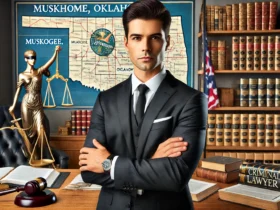

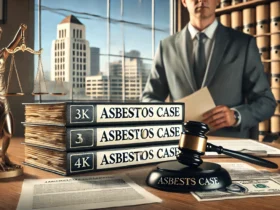
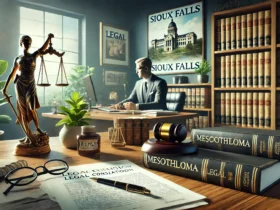
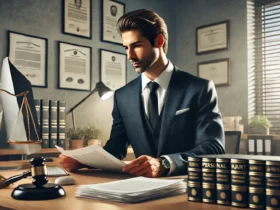
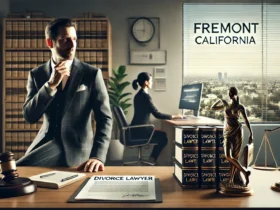
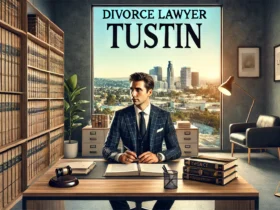
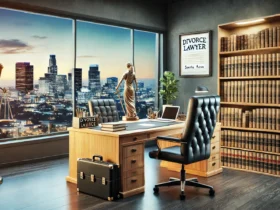
Got a Questions?
Find us on Socials or Contact us and we’ll get back to you as soon as possible.